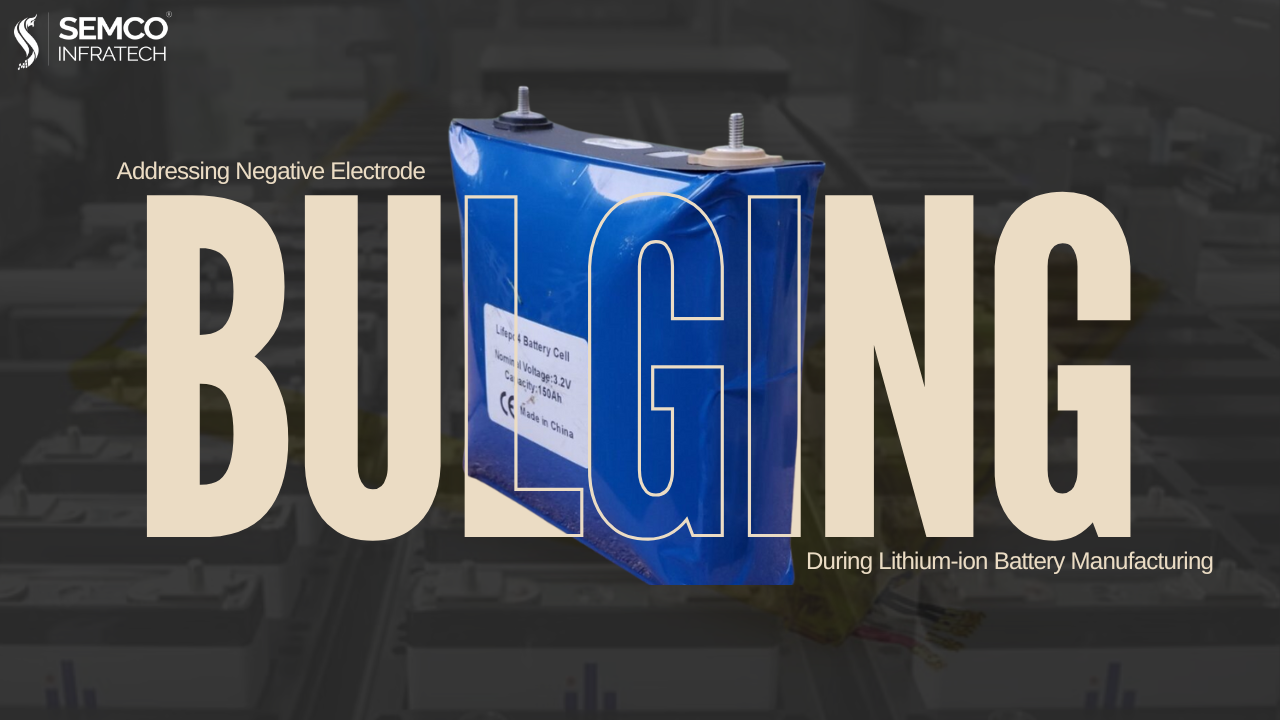Lithium-ion batteries are vital for modern energy storage, but production challenges, like negative electrode bulging after the rolling process, hinder performance. This article analyses the causes of this bulging and proposes practical solutions to enhance battery consistency and reliability using advanced battery making machine, battery making equipment, and optimized lithium-ion battery assembly processes.
Causes of “Thick Edge” Phenomenon During Rolling:
During the coating and rolling of lithium battery electrodes, a “thick edge effect” often occurs, where the edges are thicker than the centre. This issue can lead to foil breakage during subsequent manufacturing steps using any battery cell making machine.
- Uneven Drying: Edge areas dry faster due to their larger surface area, resulting in a thicker, less moist film.

- Uneven Liquid Distribution: Coating liquid can migrate to the edges during drying, making the centre thinner and the edges thicker.
- Uneven Rolling Pressure: Uneven pressure during rolling can cause insufficient compression in the centre and excessive compression at the edges.
Solutions to Prevent Negative Electrode Bulging:
- Optimize Drying: Adjust the drying process to ensure uniform drying speed across the electrode.
- Improve Coater Design: Modify the coater’s baffle or foam shape to minimize edge wet film thickness.
- Adjust Coating Parameters: Change coating speed and gap to prevent liquid migration during drying.
- Introduce Guide Structures: Add guides to the coating battery making equipment to ensure even liquid distribution.
- Optimize Rolling: Adjust speed, pressure, and temperature during rolling for uniform pressure using an advanced battery making machine.
- Electrode Design Adjustments: Modify electrode design to accommodate edge effects during drying and rolling.
- Real-time Monitoring: Implement real-time monitoring to detect and adjust process parameters during lithium-ion battery assembly.
- Post-processing: Use techniques like edge trimming to reduce edge thickness after processing with the help of a high-precision battery cell making machine.
Conclusion:
By implementing these preventive measures, the thick edge problem in lithium battery electrodes during coating and rolling can be significantly reduced. This leads to decreased foil breakage during winding and improved overall battery consistency and reliability—especially when using reliable battery making equipment, a high-accuracy battery cell making machine, and optimized lithium-ion battery assembly procedures.





